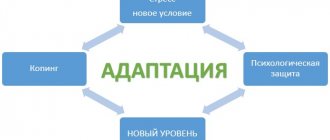It is worth noting right away that it is a mistake to use the words “communication” and “communication” as synonyms. Communication (according to Ozhegov’s explanatory dictionary) is mutual relations, business or friendly relations. This is an Old Church Slavonic word that has long been part of the Russian literary language.
“Communication” comes from the Latin word “communicare”. It means not only “to communicate”, but also “to do something in common; share something; act together, together." Both terms are united by the word “general,” and by this general is meant the subject of conversation. What's the difference?
Definition
Communication is interpersonal interaction that involves the exchange of emotionally significant messages. It does not have a clear structure and is often aimless. The interlocutors share with each other feelings, impressions, and interesting information. In other words, communication is triggered by emotions. Manipulating the interlocutor during communication depends on the type of personality, mood and is done mostly unconsciously.
Communication is a purely informational process. This is an exchange of information between individuals in which the message is conveyed purposefully. At the same time, manipulation is used meaningfully. Unlike communication, it must have a conscious goal for at least one of the participants (attracting the interlocutor to his position, encouraging him to take the necessary action, or simply increasing the information fund). Communications include business correspondence, negotiations, reports, seminars, press conferences, discussions. Emotions are not so typical for this process.
What does Bisoprolol treat?
Since the drug gives a good hypotensive effect, the patient’s high blood pressure is normalized.
Thanks to the antianginal effect, the manifestations of angina are eliminated, and the heart rate is reduced.
The medicine is often prescribed for the complex treatment of thyroid pathologies, especially if the patient has developed thyrotoxic crisis and hyperthyroidism.
The main indications for prescribing this drug are coronary heart disease, pain in the sternum, angina attacks, acute myocardial infarction, arterial hypertension at any stage of development, uncomplicated and complicated, secondary and essential hypertension.
Bisoprolol is prescribed for various cardiac arrhythmias, especially if the patient has developed tachycardia or has a rapid heartbeat.
Communication functions
- Information and communication – exchange of information.
- The interactive function of communication is associated with the development of rules for the interaction of people, the clear organization of their joint activities to achieve their goals.
- Cognitive – mastering new information to apply it in practical activities.
- Axiological – evaluation of an object or process from the point of view of usefulness (value) for an individual or society as a whole.
- Normative – transfer and consolidation of norms in everyday consciousness.
- Psychotherapeutic – establishing human relationships. It is known that man is a social being, therefore, without communication with other individuals, association inevitably occurs, subsequently leading to severe mental disorders. It is known that the most terrible punishment is solitary confinement, in which the prisoner soon goes crazy.
- Social-practical – exchange of results of activities, abilities, skills.
Communication model
According to the traditional communication model, the following sequence of elements is distinguished:
- The source of information (addressee) is a person who has a specific goal of communication, an idea.
- Coding is the process of translating thoughts into a sign system (words, facial expressions, gestures) that can be transmitted.
- Communication channels are means of transmitting information. These are technical means: telephone, Internet or the environment (air, light, water).
- Decoding is the decoding process in which the recipient (addressee) gives the encoded information real meaning.
- Recipient (addressee) – the one to whom the information was intended.
- Feedback is what the recipient feels in response to the information received.
- Feedback is that part of the response that the recipient conveys to the sender with words, actions, symbols, and emotions. At the same time, communication roles change.
One more element is highlighted separately – noise. These are the external factors that distort the transmitted data, violate their integrity and the ability to be perceived by the recipient. Noise also includes communication barriers, that is, psychological obstacles that interfere with the adequate perception of transmitted information.
The essence of the concept
Marketing communications are inherently the process of informing the target audience about a product and its properties. The key to the success of any company is to correctly identify for itself exactly the market whose clients are most likely to be interested in its marketing program.
Even recognized market giants target certain groups of the population to promote their products.
The marketing communications system (MSC) is a set of subjects, as well as means, channels, direct (messages) and reverse (recipient's reaction) connections in the process of interaction of the marketing system with the external environment, as well as a set of forms and means of interpersonal interaction.
It is important for company specialists to understand that they can effectively convey a marketing message to the consumer using a variety of methods. Thus, both the product itself and its cost, as well as methods of distribution, are able to convey to the consumer the most important market information
These three components, together with marketing communications, form the marketing mix
Thus, both the product itself and its cost, as well as methods of distribution, can convey the most important market information to the consumer. These three components, together with marketing communications, form the marketing mix.
Integrated marketing communications essentially represent the concept of integrated use of many types of different MKs at once, based on the unity of goals.
At the same time, communications complement each other advantageously. The resulting synergy effect makes it possible to achieve much higher efficiency than that achieved by using only specific types.
The main goals of marketing communications are to create an understanding among the target audience about the company's main marketing strategy by sending messages about both the product itself and its cost, as well as sales methods in order to arouse interest.
Communication barriers
- Phonetic barrier. It is due to the peculiarities of speech. It can be complete or incomplete. Incomplete misunderstanding occurs when a person slurs his words, has a lisp, or speaks very quickly. There can be a complete misunderstanding, for example, when conveying information in a foreign language. A phonetic barrier also occurs with a sharp increase in tone, since this blocks the understanding of what is being said, and attention is transferred to the attitude of the speaker. The phonetic barrier can be overcome by proper pause placement and moderately calm speech.
- Semantic barrier. It occurs when the interlocutor does not understand the meaning of what was said. This is due, for example, to the use of slang words by representatives of various subcultures. To overcome this barrier, it is necessary to abandon the use of speech forms used purely in your subculture.
- Stylistic barrier. This is a discrepancy between the style of data transmission and its content. For example, presenting a recipe in an artistic style.
- A logical barrier occurs in people with different types of thinking. For example, one interlocutor has abstract-logical, the other visual-figurative. You can explain the road in completely different ways. For a person with abstract logical thinking, it will look like this: “walk straight 200 meters to the pedestrian crossing sign, after it turn left and walk forward all the way until you meet a yellow sign.” For a person with visual-figurative thinking, the following explanation will be typical: “Go there (points forward with his hand) until you see a crowd of people, its direction will show you the further path.” It is necessary to learn to adapt to the type of thinking of the recipient of information.
Causes
Among other reasons that provoke pain in the orbit when trying to move the eyeballs, it is worth noting the following. Viruses that cause intoxication, such as adenovirus and influenza. Adenovirus often provokes the development of conjunctivitis and scleritis. Viruses contribute to the development of myalgia.
Many infections can cause neurotoxicity, so nerve endings are damaged. The pain will intensify when you try to move your eyes. Sinusitis and sinusitis provoke the appearance of painful manifestations when rotating the eyeballs. Often with sinusitis there is pain, which goes away with recovery.
The organ of vision hurts when moving if swelling appears inside the eyeball. It increases intraocular pressure and negatively affects the eye muscles.
Manifestation of allergies, for example, Quincke's edema. To exclude allergies or hypersensitivity, you need to take any antihistamine. The soreness will begin to subside as the allergy medication begins to take effect.
What are the ocular causes of pain? Blepharitis often causes eye pain when moving. This is an inflammation that affects the tissues of the eyelid. Blepharitis usually affects the edge of the eyelashes, although it can also affect other tissues. The disease is easy to identify. Its main symptoms include swelling and redness.
Neuritis of the oculomotor nerve also causes pain in the eyes. The disease is not often observed in patients, but it causes many problems. An ophthalmologist will be able to determine neuritis, since diagnostic measures are specific.
If it is painful to rotate the eyeballs, this is often caused by myositis, a pathology that provokes the development of an inflammatory process in the eye muscles. It will be painful because the load and pressure on the optic nerve increases.
A dangerous disease is glaucoma, when it hurts to lift your eyes up or rotate them. The disease is characterized by increased intraocular pressure, which provokes atrophy of the optic nerve. At the same time, the quality of vision begins to drop sharply, the field of view decreases several times. Sometimes glaucoma provokes the onset of blindness.
Incorrect vision correction
If glasses or contact lenses are chosen incorrectly (a large difference in diopters between the eyes, full or excessive correction), this causes unpleasant sensations: from visual discomfort to severe pain in the eyes: pressing, aching or cutting.
This condition is often accompanied by headaches. By closing your eyes or removing your glasses (contact lenses), this eye pain may decrease or go away.
Well, not really. The only thing they have in common is that both influenza and ARVI are caused by viruses.
But these viruses are different: rhinoviruses are “responsible” for ARVI, and viruses of another group are “responsible” for influenza. And these diseases progress in different ways.
ARVI begins with a runny nose, then a sore throat begins. The temperature usually stays low - around 37.5 degrees.
With the flu, a runny nose appears at the end of the illness, and the first symptoms are high fever and muscle pain.
It logically follows from this myth...
- Muscle pain when moving the eyeball. This usually occurs due to unstable eye or blood pressure. It can also occur at elevated temperatures. This happens due to the fact that muscle tone sharply decreases and the eyes receive a double load. Usually, at very high temperatures, pain in the eyes and head are common complaints. Particularly painful sensations occur when rotating the eyes and concentrating on one point.
To treat this type of pain, it is necessary to eliminate the cause that causes high blood pressure or high temperature. After all, one, and the other, and the third are symptoms, not diseases.
If you have a runny nose or sore eyes, these may be symptoms of an infectious disease - a cold or flu. Even after recovering from the flu, a person may experience discomfort in the eyes: the eyelids open hard, it is difficult to focus on anything... Let's try to figure out what the causes of pain are and how to eliminate pain in the eyes during colds and flu.
Arterial hypertension
Cephalgia with a constant increase in blood pressure is mainly provoked by vascular factors, neurological and liquordynamic disorders.
Violation of the venous outflow leads to the fact that after a long period of lying down, the patient feels a pressing headache of a bursting nature. In this case, examination of the fundus will show dilation of the veins. Pain radiating to the back of the head is caused by the fusion of intracranial venous sinuses in this place.
With vascular spasm, which characterizes ischemia and dyscirculatory encephalopathy, the pain becomes pressing, aching, and dull.
Types of communications in an organization
Based on organizational characteristics, the following communication channels are distinguished:
- Formal (Vertical ascending and descending, horizontal)
- Informal
Formal communication channels are defined by management regulations. Widely used in organizations with a hierarchical management structure. Downward vertical channels are the movement of information from management to subordinates. These can be specific tasks for performing work, information on it, instructions, feedback from subordinates on the results of activities. Ascending vertical channels are the movement from subordinates to management. They perform the role of obtaining information about the progress of the work being performed, its final results, feedback from the manager, as well as the opinions of subordinates on current issues.
Informal communication channels are most often represented by rumors. This is faster transfer of information. Managers often use these channels to study the opinions of employees and their readiness for change, the weaknesses of the organization. The nature of rumors can be positive (the wishes and hopes of employees), negative (fears and concerns of employees, expressions of hatred towards someone or an organization) and neutral (alleged changes in the control of labor discipline, future layoffs, promotions or demotions).
And finally, horizontal channels - communication between employees performing job responsibilities at the same level in order to coordinate the work process.
Components of communication and its varieties
Components of communication are those components that are not included in the structure of communication.
These include:
- content,
- target,
- facilities,
- subjects (participants of interaction),
- type of connection between subjects,
- style,
- tactics,
- techniques, methods,
- result.
Depending on the components, various types and forms of communication are distinguished:
- emotional – exchange of emotions;
- cognitive – knowledge sharing;
- activity - exchange of skills and abilities;
- motivational – exchange of desires and goals;
- material – exchange of objects or products.
Types of social interaction can be defined as its levels. Level – certain behavioral manifestations of a personality that allow us to draw conclusions about a person and the ways of his interaction with other people. The types and levels of communication change as it becomes more complex from simple, primitive to complex, spiritual.
Principles of Effective Communication
- The principle of consistency.
Semantic correspondence between the information received and the response. For example, a greeting requires a return greeting. A question should be answered, not another question. In this way, each speech fragment will have a conclusion.
- The principle of preferential structure.
Confirming and rejecting responses are given differently. Consent is usually expressed without delay, extremely concisely and clearly.
The boss asks the subordinate: “The report must be submitted by tomorrow”
The subordinate replies: “Okay.”
Disagreement is accompanied by a preliminary pause, followed by a more voluminous response, including arguments and explanations.
Boss: “Analyze the department’s weekly statistics by evening.”
Subordinate: “(pause) I would love to complete this assignment, but right now I’m busy with the previous task.”
A sender who knows the principles of effective communication will hear a pause of disagreement after a request and soften the request.
Boss: “Analyze the weekly statistics for the department by evening and then you can leave work early tomorrow.”
Such a conversation will get rid of unnecessary tension, and the order will be completed.
- The principle of cooperation.
Consists of 4 groups of postulates: quality, quantity, attitude, method.
Quality: “The statement must be true.”
Quantity: “The statement must contain no less and no more information than required”
Attitude: “Stay on topic.”
Method: “Be clear.”
Mass communication
A few centuries ago, fashion took many decades to spread. For example, the fashion for wigs, which was introduced by the French king Louis XVI in 1580 to hide baldness, did not spread throughout Europe until more than a hundred years later. Today, the Pokemon Go application has gained popularity so rapidly that after only 2 weeks, the number of its users was 45 million. And the point is not in the degree of significance of the event or fashion, but in the evolution of the media.
Mass communication – literally translated as “mass communication”, that is, communication in which a large number of people participate. Carried out using technical means (television, computer equipment, print, radio, etc.) or other means of mass communication (information)
Management methods
In a modern society built on technological excellence, where you can easily obtain any information from the Internet or any other sources, communication skills are an increasingly valuable skill.
Managing methods and types of communicative communication is a particularly important skill that allows you to improve your personality and achieve high success at work, in communication, and in society in general.
Since in most cases, people solve problems through communication, difficulties in communication can be reproduced due to its insufficient development, which is especially evident in the case where there is a lack of experience.
The main goals of all techniques for managing communication skills are:
- it is easy and accessible to establish interaction between people and its subsequent maintenance;
- developing the desired impression on individuals through various techniques;
- mastering psychological techniques to influence audiences;
- training in convincing argumentation of a personal position;
- successfully defending one’s own opinions and interests;
- quickly overcome life conflicts;
- awareness of the motives of spoken words and actions, including the reaction to them from people around them;
- developing effective listening and the ability to ask interesting questions;
- conscious use of non-verbal communication methods;
- diagnosing various psychological signs in the opponent’s actions;
- identification and further elimination of manipulation on the part of the interlocutor;
- creating the necessary trusting atmosphere of cohesion in the team, including loved ones.
Communication in psychology is a skill characterized by communication abilities that increase the quality of communication. This usually includes the ability to negotiate, maintain a conversation, quickly establish contact, etc.
In any type of relationship, the most in demand are personal communication skills:
- Do not create disputes, do not object or interrupt your opponent.
- Counter negative conversational topics by developing positive aspects of the conversation.
- Be able to indicate your own intentions and desires through verbal or nonverbal communication.
- Avoid being too categorical when developing your own opinion.
- Convey information as rationally and gently as possible, taking into account possible questions from the outside.
- Speak concisely, express the main idea clearly and in a structured manner.
- Ask your opponent what he thinks about the topic being discussed.
- Avoid unnecessary accusations or reproaches towards the interlocutor, do not touch upon painful topics.
- Emphasize the important meaning and agreement with the subject’s opinion: admire, thank, give compliments.
Communication skills are a particularly important component of any communication, which will allow you to develop the desired relationships, gain the approval you need, and also use your strengths in various areas of life. A correct understanding of the psychology of communication is the key to success and improvement of a person’s personality.
Theories of mass communication
There are 2 approaches to understanding their influence on humans:
- Person-centered approach. This trend is characterized by the fact that a person adapts the media to his own needs and needs. That is, it skillfully uses information volumes, easily filtering necessary and unnecessary data.
- Media-oriented approach (G. McLuhan's theory). This approach is characterized by the fact that the person himself is subject to the means of mass communication. They act on his consciousness, change his views. Moreover, the strength of the impact depends on the life experience of the audience, its attitudes, and speed of perception.
Functions of mass communication
- Informational. It consists of conveying information to the audience. This increases the degree of knowledge of the individual, expands his ideas about the world. This function is useful provided that the transmitted information is reliable and people have a high degree of criticality.
- Regulatory. Consists of social control through manipulation and control of people's minds. Achieved by shaping public opinion.
- Socialization. A person, as a rule, accepts social norms, principles of ethics and aesthetics promoted in the media as a proper stereotype of lifestyle, clothing style, communication manners, etc. In this way, norms corresponding to a given historical period are formed.
- The culturological function is associated with the transmission of cultural values to next generations. Promotes mutual understanding between representatives of different cultures and religions, relieving social tension.
Characteristic
The characteristics of the basic interaction of communication in society consists of certain features that together constitute its specificity in the role of a psychological and scientific discipline.
The most significant are:
- direct presence of feedback in the development of interpersonal communication;
- performance of individuals as both recipient and sender of information;
- irreversibility of communication in the context of the impossibility of destroying already spoken information;
- the presence of the inevitability of communication due to the main goals of human life in the role of a social phenomenon - the impossibility of existing without any communication, which is also the basic need of the subject.
Basic elements
The presence of a communication process is determined by a combination of many elements.
Social-psychological theory usually distinguishes 4 basic elements:
| Element | Characteristic |
| Sender | The subject who generates the idea or subject of conversation, including the collection of information and its communication |
| Message | Acts as spoken information |
| Channel | Method of oral or written transmission of data |
| Recipient or addressee | An individual who is intended to receive or send information with its subsequent interpretation |
Communication as a social process of exchange and transmission of data is characterized by the following stages: selection of relevant information, determination of the transmission channel, interaction with the subject, interpretation of the received data.











